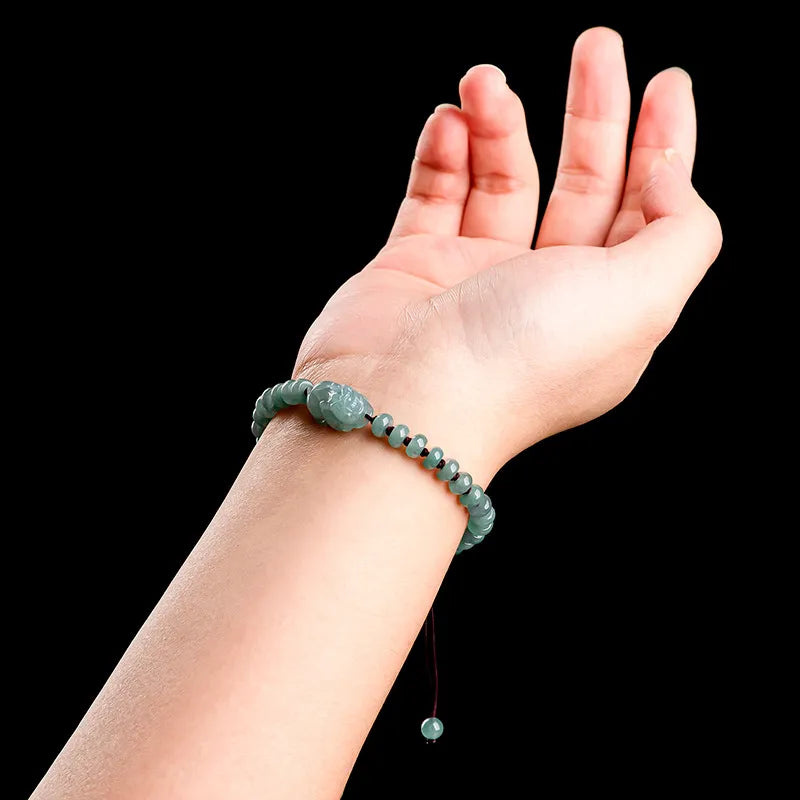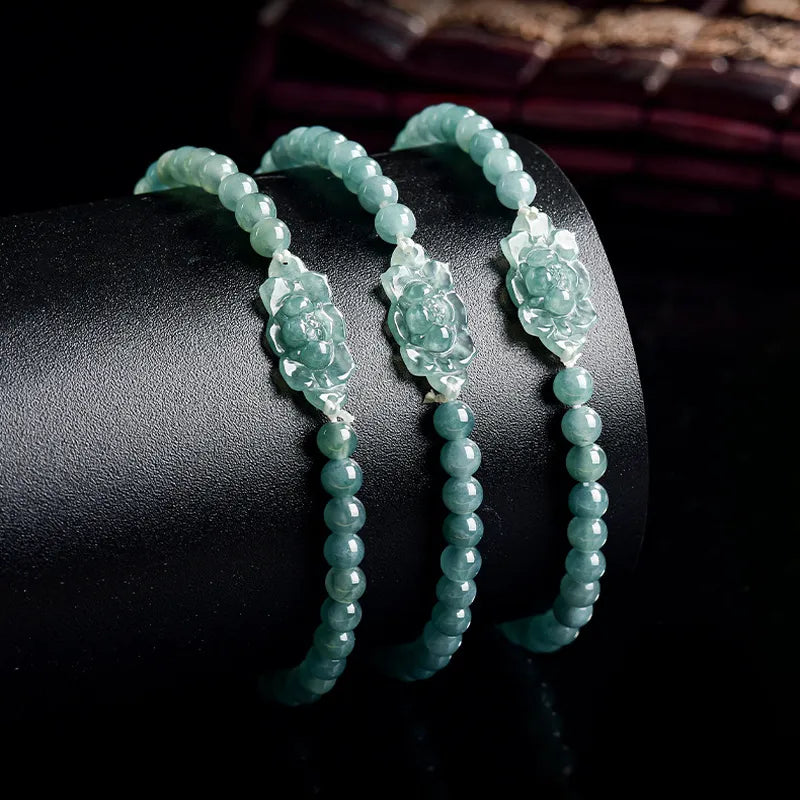How to Measure Jade Bangle Inner Diameter Accurately: A Step-by-Step Guide
Choosing the right inner diameter for a jade bangle ensures comfort and prevents slipping or discomfort. Unlike rigid metal bands, jade’s brittleness requires precise sizing to avoid breakage. Below, we explore practical methods to measure wrist dimensions and match them to bangle sizes without specialized tools.

1. Measuring Wrist Circumference for Reference
Start by determining your wrist’s natural circumference to estimate the ideal bangle diameter.
- Flexible Tape Method: Wrap a soft measuring tape snugly around the widest part of your wrist (usually just below the hand bone). Note the measurement in millimeters. Add 10–15mm to this number to account for the bangle’s thickness and ease of movement.
- String Substitution: If no tape is available, use a non-stretchy string. Mark where it overlaps, then lay it flat against a ruler. Convert the length to millimeters and follow the same adjustment as above.
- Posture Consideration: Measure while sitting with your arm relaxed. Tensing muscles or bending the wrist can distort results.
Common Mistake: Avoid wrapping the tape too tightly, as this may lead to a bangle that feels constricting during daily wear.
2. Using Existing Bangles as a Template
If you already own a well-fitting bangle, use it to determine the correct size.
- Diameter Calculation: Lay the bangle flat on a table. Measure the widest distance across the center (inner diameter) with a ruler. Compare this measurement to your wrist circumference plus the 10–15mm buffer.
- Shape Adaptation: Oval or elliptical bangles may fit differently than circular ones. Trace the inner shape onto paper and cut it out. Test if the paper template slides comfortably over your hand without forcing.
- Thickness Adjustment: Thicker bangles (over 8mm) require slightly larger diameters. Add 2–3mm to your calculated size if the bangle has a wide profile.
Visual Check: Hold the bangle against your wrist. There should be a 1–2 finger-width gap between the skin and the bangle when worn loosely.
3. Testing Fit Over the Hand
Jade bangles must slide over the hand’s widest point (usually the thumb joint and knuckles).
- Hand Positioning: Make a loose fist with your thumb tucked against your palm. This mimics the narrowest part of your hand for sliding the bangle on.
- Bangle Sizing Tool: Cut a strip of paper 2–3cm wide and 15–20cm long. Wrap it around your fist at the knuckles, mark where it overlaps, and measure the length. Divide by 3.14 (π) to estimate the required diameter.
- Gradual Testing: If unsure, start with a bangle 1–2mm larger than your calculated size. Test by gently pushing it over your hand. It should require slight effort but not cause pain or redness.
Safety Tip: Never force a bangle over your hand. Applying excessive pressure can crack the jade or injure your joints.
4. Accounting for Temperature and Swelling
Wrist size can fluctuate due to environmental factors or health conditions.
- Time of Day: Measure in the evening when hands are slightly swollen from daily activity. Morning measurements may underestimate the required size.
- Climate Impact: Hot weather or high humidity can cause temporary swelling. If you live in a humid region, opt for a bangle 1–2mm larger than your baseline measurement.
- Health Considerations: Conditions like arthritis or pregnancy may alter wrist size. Consult a healthcare provider if you need a bangle for therapeutic use and experience frequent swelling.
Flexibility Check: A well-fitted bangle should rotate slightly on the wrist but not slide off when the hand is raised.
5. Verifying Size with Professional Tools
For precise measurements, consider using sizing tools available at jewelry stores or online.
- Mandrel Gauges: These conical tools display diameter measurements. Slide your hand over the mandrel to find the smallest point where the bangle fits comfortably.
- Digital Calipers: Use calipers to measure the inner diameter of existing bangles or your wrist’s circumference. Digital models provide exact readings in millimeters.
- 3D Printing Aids: Some enthusiasts create custom 3D-printed sizers shaped like bangle cross-sections. These mimic the feel of a real bangle during testing.
Accessibility Note: If professional tools aren’t available, the string-and-ruler method remains reliable for most users.
Final Thoughts on Sizing Accuracy
Selecting the right bangle size combines objective measurement with subjective comfort. Prioritize ease of movement over strict adherence to numbers, as jade’s fragility leaves little room for error. When in doubt, choose a slightly larger size to avoid forcing the bangle over your hand. Regularly recheck your wrist size if your body or lifestyle changes significantly.






